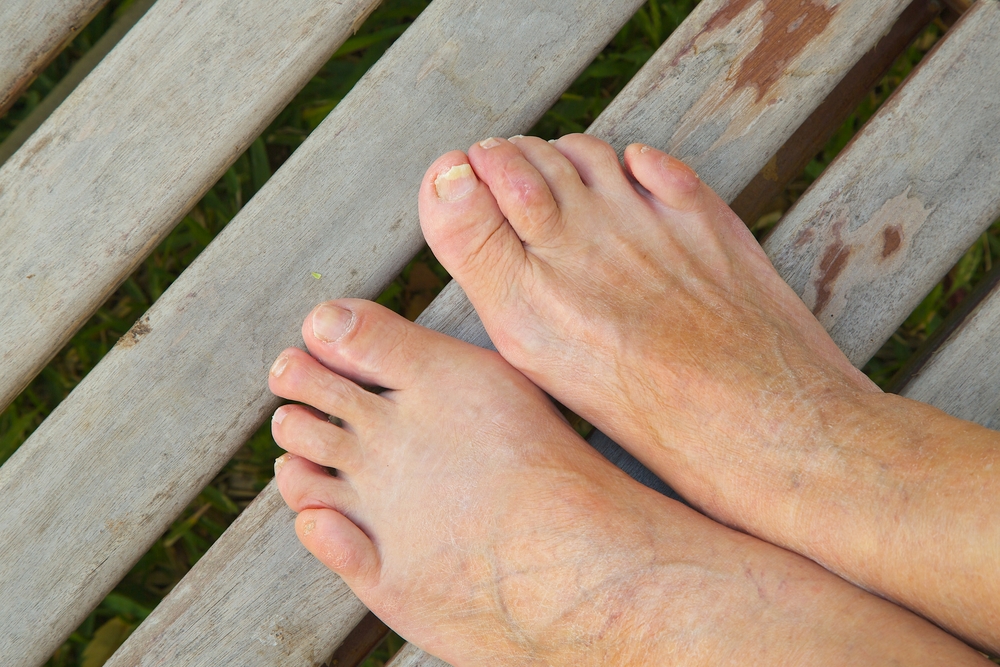
Hammertoe is a common foot condition and is considered to be a deformity. It is noticeable as the joints in the middle toes bend upward, forcing the toes to point downward, somewhat resembling a hammer. It generally happens as a result of wearing shoes that do not have adequate room for the toes to move freely in, gradually causing them to shift abnormally. Some patients develop corns on top of the affected toes, as they touch the top of the shoe while walking. Hammertoe can fall into two categories that are referred to as flexible or rigid. As the name implies, flexible hammertoe can move at the joint, and relief may come from using a protective pad. Rigid hammertoe may press the joints out of alignment, and different relief methods may be used. If you have any form of hammertoe, it is a good idea to confer with a podiatrist who can determine what the best course of treatment is for you.
Hammertoe
Hammertoes can be a painful condition to live with. For more information, contact one of our podiatrists from Front Range Podiatry. Our doctors will answer any of your foot- and ankle-related questions.
Hammertoe is a foot deformity that affects the joints of the second, third, fourth, or fifth toes of your feet. It is a painful foot condition in which these toes curl and arch up, which can often lead to pain when wearing footwear.
Symptoms
- Pain in the affected toes
- Development of corns or calluses due to friction
- Inflammation
- Redness
- Contracture of the toes
Causes
Genetics – People who are genetically predisposed to hammertoe are often more susceptible
Arthritis – Because arthritis affects the joints in your toes, further deformities stemming from arthritis can occur
Trauma – Direct trauma to the toes could potentially lead to hammertoe
Ill-fitting shoes – Undue pressure on the front of the toes from ill-fitting shoes can potentially lead to the development of hammertoe
Treatment
Orthotics – Custom made inserts can be used to help relieve pressure placed on the toes and therefore relieve some of the pain associated with it
Medications – Oral medications such as anti-inflammatories or NSAIDs could be used to treat the pain and inflammation hammertoes causes. Injections of corticosteroids are also sometimes used
Surgery – In more severe cases where the hammertoes have become more rigid, foot surgery is a potential option
If you have any questions please contact our office located in Littleton, CO . We offer the newest diagnostic and treatment technologies for all your foot and ankle needs.
